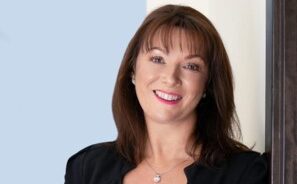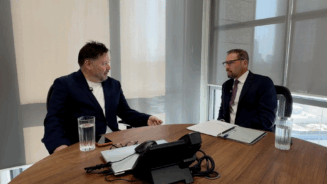We talked in the past about how we wanted to be more than just a product provider and much more of a strategic partner with the life groups. That has worked really well for us.
In the past two years we have continued with our programme of investment intelligence seminars. We are constantly looking at whether the right funds are on platform and many different funds have been added.
As an organisation we have also got better investment performance across the range. That has given us the opportunity to have new funds on the platforms.
One of the things we have looked at doing is making sure that, as a result of our annual Middle East research study, we get a sense of where the demand is in terms of specific funds or asset classes.
We have been early at getting into conversations with life groups about making sure those are put on the platforms, including the launches of the India fixed income, multi-asset, sterling fixed income funds and a feeder fund to our UK income products.
All of those have taken place in the past two years and that has continued to make the life groups an important part of our overall distribution.
What has been the impact, from a Middle East international perspective, of the departure of Invesco Perpetual’s high-profile fund manager Neil Woodford?
Creating this feeder fund vehicle took place at around the same time as the changes in the management of the fund, so we did not have a particular legacy base of assets.
We have made sure that Mark Barnett was introduced to a number of these organisations.
The good news was Mark’s ability to continue to drive on the performance of that fund. Bear in mind we had a lot of success in continuing to build assets and new flows on the back of that fund in the UK.
There was a lot of synergy between the life groups in the UK and the offshore counterparts as well. We have only had net-positive results in terms of the offshore life companies with that product anyway.
Have you noticed an upsurge in the number of non-resident Indians (NRIs) and their advisers during the past two years, and do you think that is a much more important market to both asset managers and life companies?
It has become a much more impor-tant market for the life companies, but it was already important for us because we have been working with a lot of the banks dealing with the NRI marketplace.
Similarly, there has been an increase in the number of NRI advisers attending our annual Dubai investment meeting.
When we look at the underlying trends in the marketplace for our study, we think we have a good understanding of how the different segments now operate.
The NRI segment is very different to the western expat segment. Interestingly, in the past two years we have been monitoring our brand in the region. We consistently come out first or second in the western expat and NRI segments.
What we have tracked with the NRI marketplaces is a home market bias, with a sensitivity to Indian interest rates but still an interest in international investing.
Both sides of that have been an advantage as we launched our India fixed income fund in the last two years. There has been a lot of interest in that fund in the quest for yield but, at the same time, movement into some of the other more global products we offer.
Western expats are now investing more in the Middle East and we have seen some activity with western expats now starting to be stakeholders in the region, in terms of the global portion of their portfolios.
Some of that is in UAE real estate and there has also been quite a lot of interest in the local IPOs from expats as well as from locals. I would not have predicted that would be a new trend two years ago.
The UAE is seen as a success story and it is enough to have expat investors taking a long-term view of investing there as well.




